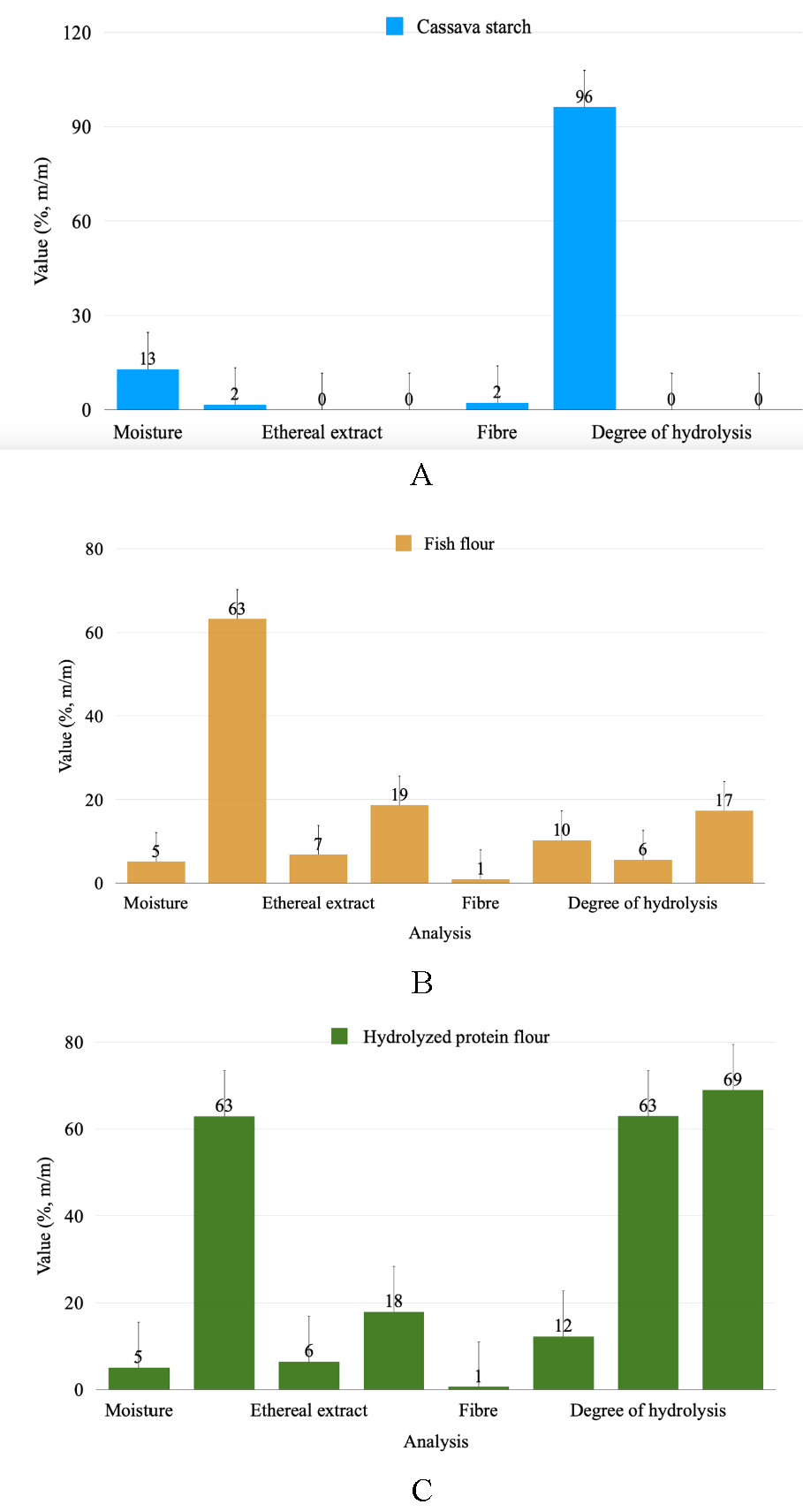 |
|
Extrusion cooking is a continuous mixing, cooking, and forming processing method. The main objective of the study was to determine the effect of the inclusion of chemical silage residues from the benefit of trout (Oncorhynchus mykiss) in the extrusion process of a food diet for fish. The evaluation of the inclusion of hydrolyzed protein flour (HPF) was carried out in a simple screw extruder, using a 2k factorial design, with four factors: extrusion temperature profile, screw speed, humidity, and HPF, evaluating response variables physicochemical characterization of protein, physical properties such as hardness, durability, density, buoyancy and expansion index. The hydrolyzed protein flour generated changes during the extrusion process related to its cohesiveness and plasticizer capacity. Regarding its cohesiveness, it was verified with the improvement in the physical properties of the pellet and its plasticizing capacity by reducing the average retention time. The results showed the techno-functional potential of hydrolyzed protein flour for its application in the animal feed industry, being a raw material that can be used as a regulating additive of the physical quality of the pellet. It is suggested to expand the study of the mass range of the peptides contained in hydrolyzed protein flour.
Keywords: Cohesiveness, Hardness, Expansion Index, Buoyancy, Pellet, Power Law.
|
|
 |

